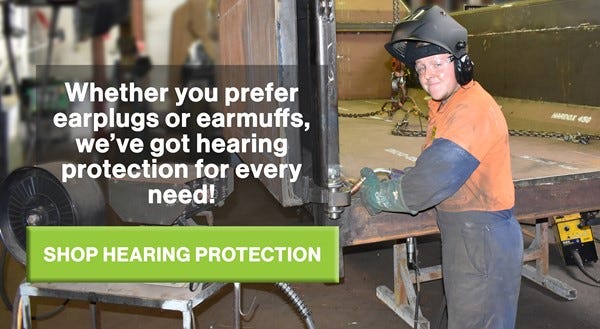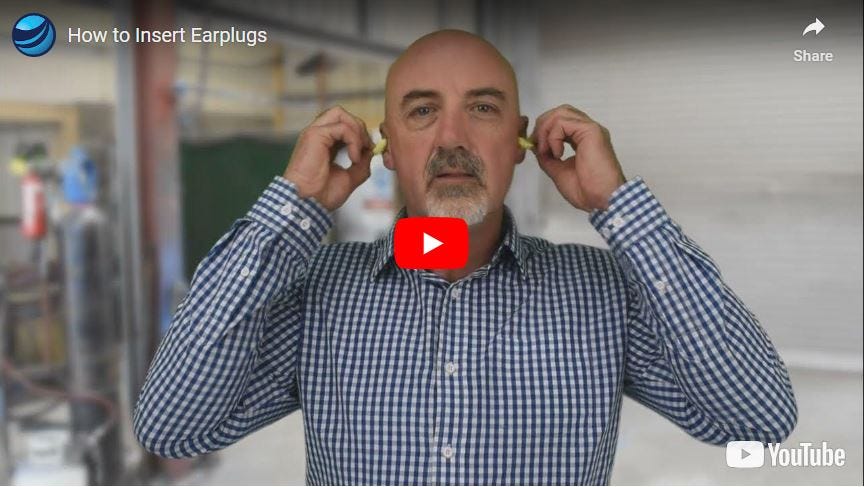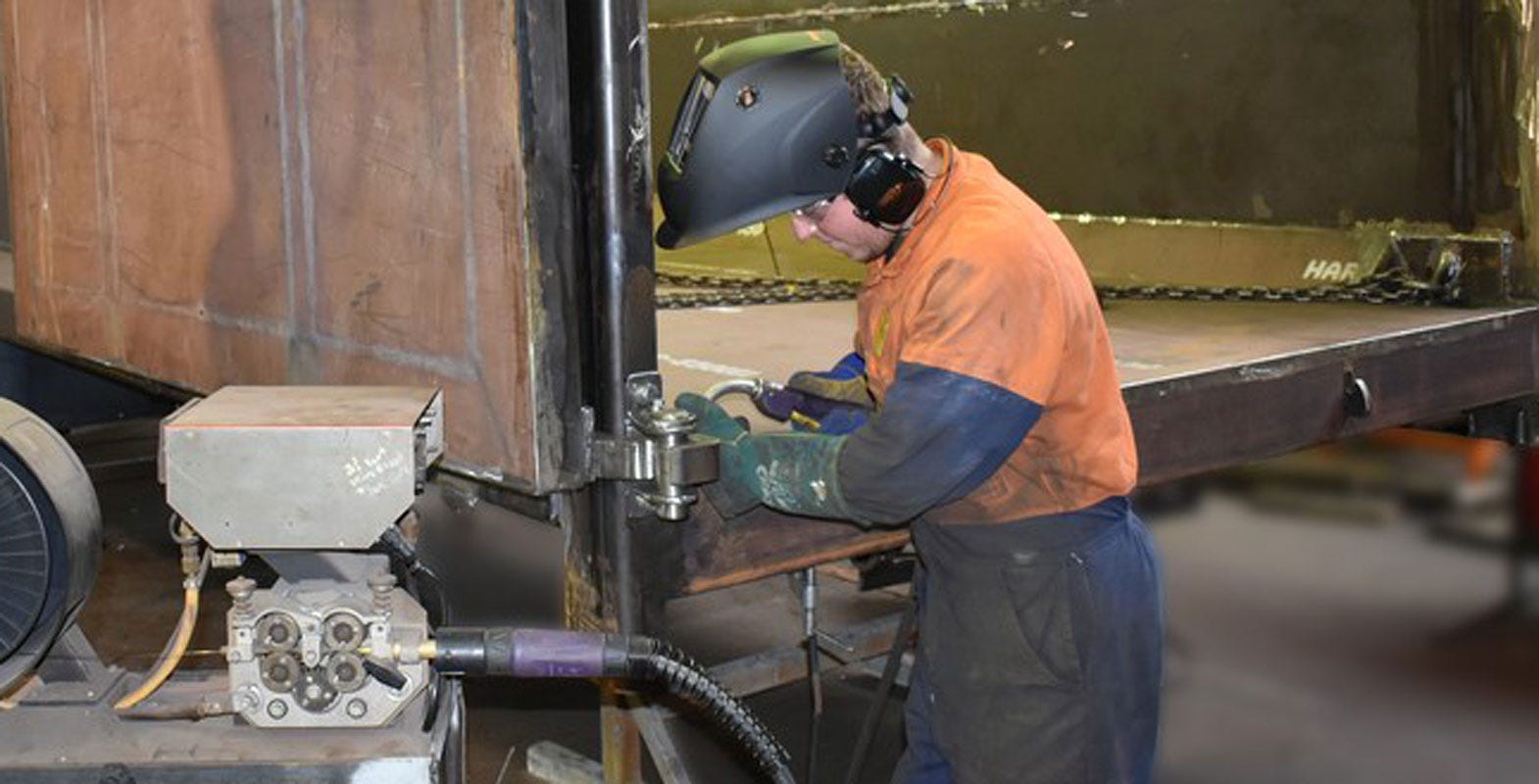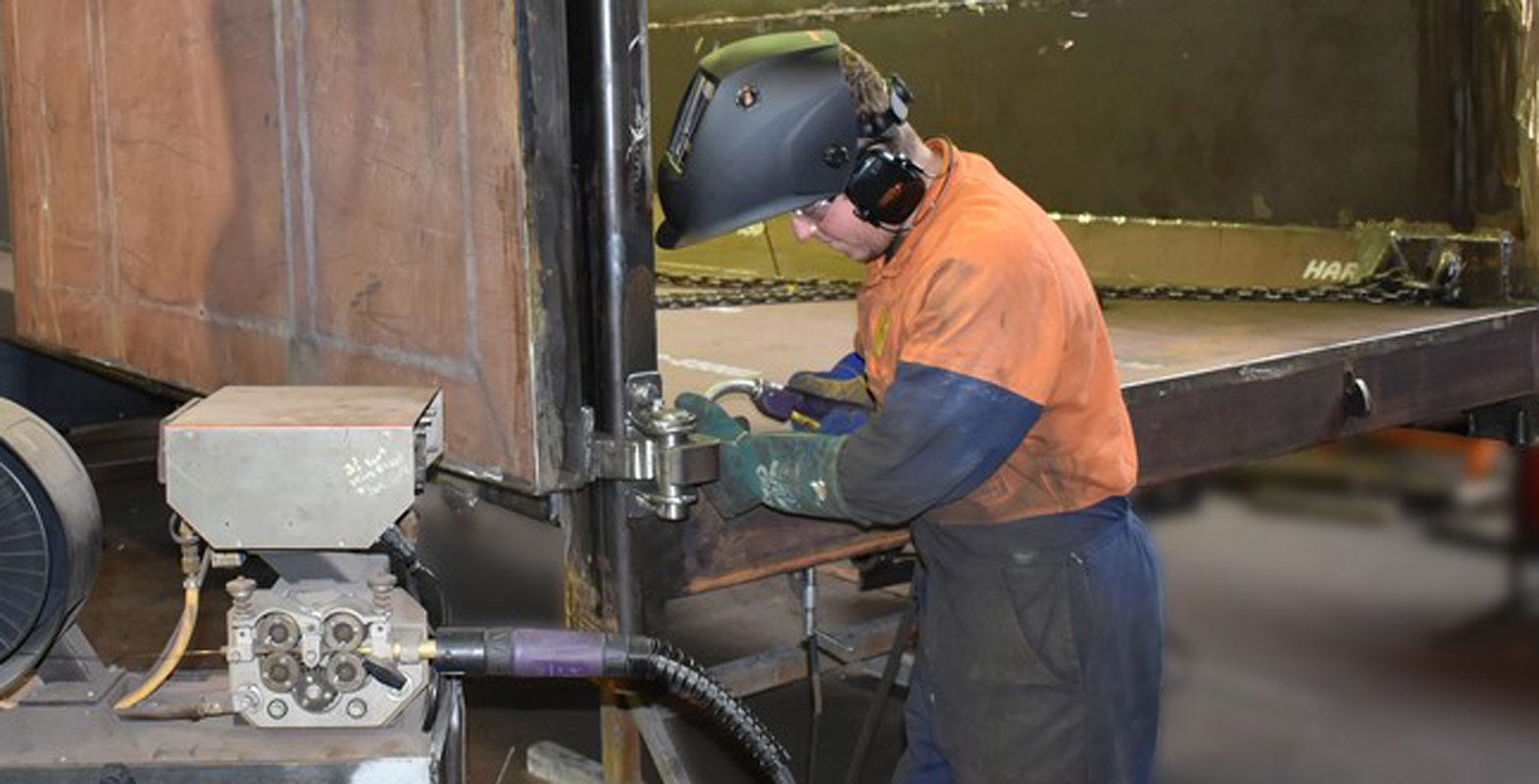Is ear protection the best solution to stop hearing loss?
Let's face it, no one wants to lose their hearing. Working in the metal fabrication industry can be noisy, and wearing ear plugs or ear muffs for 8 or 9 hours a day can be really uncomfortable. Luckily, PPE is not the only way to manage noise in the workplace, so there's no need to super glue ear plugs in to prevent hearing loss. So when is hearing protection necessary, and what else can be done to manage noise in the workshop?


What kind of noise can cause hearing damage?
When you work in the same conditions every day it's easy to 'get used to' the noise. It's then easy to become complacent with wearing PPE, as it doesn't seem like you need it. Here's some of the signs noise is a problem in your workshop:
- You need to raise your voice to talk to someone only about a meter away for at least part of the day.
- There are sudden extremely loud noises in the workplace.
- At the end of the day your hearing is muffled, or your ears are ringing.
How can noise be reduced in the workshop?
If the workshop is noisy, forcing everyone to wear ear plugs is not the solution. This is not to say ear protection is unnecessary, but that for the best hearing protection for everyone, the source of the noise should first be managed. Here's how:
- Look into different product options that will reduce noise, for example, a good fibre disc will create less noise than a grinding disc when removing welds, while producing the same results.
- Where possible, move noisy machinery away from the main work areas.
- If noisy machinery must remain in the workshop, you can reduce noise by applying sound-insulating barriers and anti-vibration mountings.
- Make sure machines are well maintained to stop rattling and noises from wear.
- Job rotation can reduce the amount of noise each worker is subjected to.
- Implementing improved working techniques can reduce noise levels.
- Make sure all workers are trained and have the appropriate information necessary to make use of any noise control measures.
When should hearing protection be used?
Hearing protection such as ear muffs and ear plugs should be used as extra protection AFTER noise control techniques have been implemented. These are usually necessary in areas where noise still exceeds 85 decibels. These areas should be clearly marked.
How do I know what kind of hearing protection should be used?
Look for products that have been tested to the requirements of AS/NZS 1270:2002 Acoustics – Hearing protectors (Australian and New Zealand standards). These products will have a class rating indicating the maximum noise levels they will be effective in (see table below).


| Class | Max. Noise Level (dB) | Examples | Max. Time Without Protection (per day) |
| 1 | Less than 90 | Operating a forklift truck, air compressors, operating a welder | 8 hours |
| 2 | 0- less than 95 | Operating a lawnmower, hand held power drill | 1 hour |
| 3 | 95 - less than 100 | Belt sander, jugsaw, circular saw, bench grinder | 18 minutes |
| 4 | 100 - less than 105 | Operating a crane, jackhammer | 5 - 10 minutes |
| 5 | 105 - less than 110 | Angle grinder, bulldozer | 3 minutes |
Things to consider when choosing hearing protection:
- Ear protection should aim to at least get below 85 decibels at the ear, however should not cut out so much noise that workers are unaware of what's going on around them.
- Earplugs and earmuffs use should be targeted at noisy jobs and tasks - as we said earlier, wearing them for 8 or 9 hours a day is not all that comfortable!
- Consider if the ear protection is suitable for the environment. For example, corded ear plugs may be more suitable if they are being taken in and out as they don't have to be put down on a dirty table, and can be more easily labelled with someone's name.
- Can the ear protection be used with other PPE such as welding helmets, visors or hard hats?
- Not one size fits all. Provide a range of protection so workers can choose ones that suit them - if they like them, they're more likely to wear them!
- Make sure everyone had regular hearing tests.
 Need assistance?
Need assistance?







